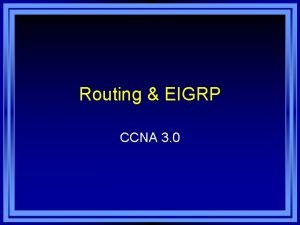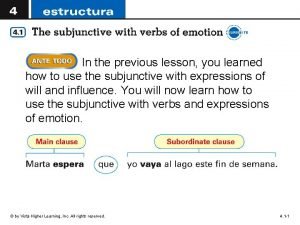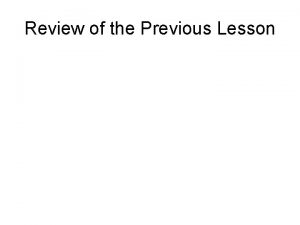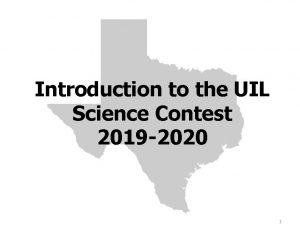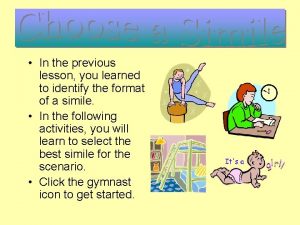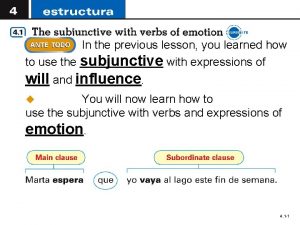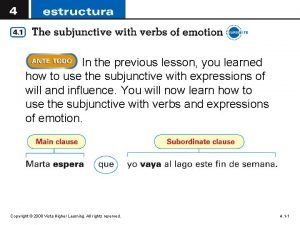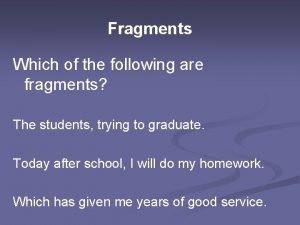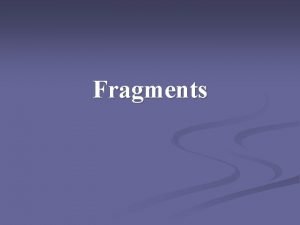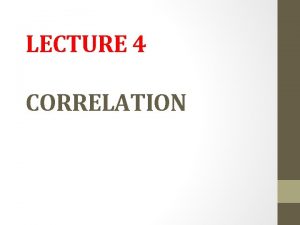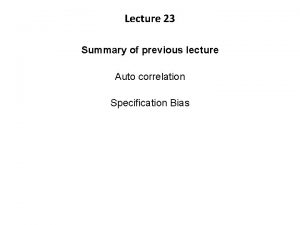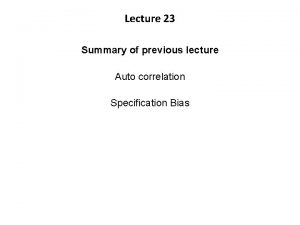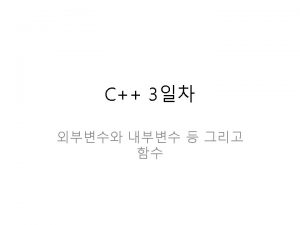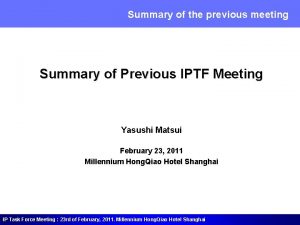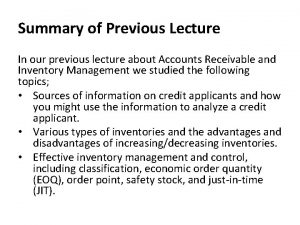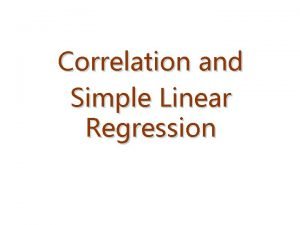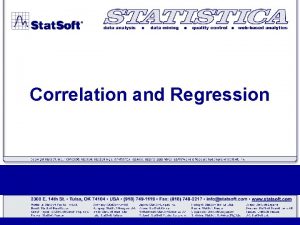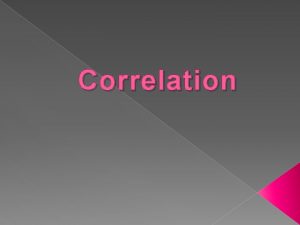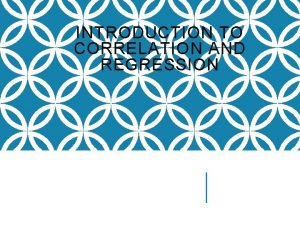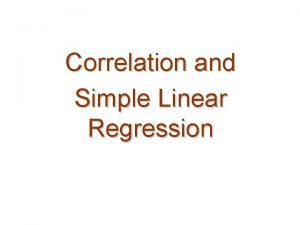Lecture 22 Summary of previous lecture Auto correlation
















- Slides: 16

Lecture 22 Summary of previous lecture Auto correlation Ø Nature Ø Reasons Ø Consequences Ø Detection

Topics for today Autocorrelation • Detection • Removal methods • Specification Bias

Detection of Autocorrelation… •

Detection of Autocorrelation…

Autocorrelation detection method… Rule of thumb Ø If d is found to be 2 in an application, one may assume that there is no firstorder Autocorrelation, either positive or negative. Ø The closer d is to 0, the greater the evidence of positive serial correlation. Ø The closer d is to 4, the greater the evidence of negative serial correlation. Procedure: 1. Run the OLS regression and obtain the residuals. 2. Compute d from the formula 3. For the given sample size and given number of explanatory variables, find out the critical d. L and du values. 4. Now follow the decision rules.

Detection Autocorrelation 3 - The Breusch–Godfrey (BG) Test: It is a general test Consult any of the standard book There also other tests of detection of Autocorrelation

Remedial Measure 1 - Change the functional form 2 - Generalized least-square (GLS) method: 3 - Newey–West (for large sample) 4 - In some situations we can continue to use the OLS method.

Pure versus model misspecification autocorrelation Autocorrelation occurring from other than the model specification bias. How we come to know? Example: Change model: The solution is GLS and FGLS Methods


Generalized Least Square Method. . . For simplicity assume the two variable model: Assume error term follow the scheme If is known : If the given relation holds true at time t, it also holds true at time (t − 1). Apply OLS on the transformed variables. The estimators will be BLUE. This is GLS


GLS…. When is not known: Apply first difference model: As ranges between -1 to 1: Suppose is equal to 1 the previous model becomes: Now run the regression The is highly debatable: ignoring all The model is with out intercept It may help in getting rid of autocorrelation along with making the series stationary.


Model specification bias • CLRM assumes that model is correctly specified Ø What are the criteria in choosing a model for empirical analysis? Ø What types of model specification errors is one likely to encounter in practice? Ø What are the consequences of specification errors? Ø How does one detect specification errors? Ø What remedies can one adopt and with what benefits? Ø How does one evaluate the performance of competing models?

Model specification … According to Hendry and Richard, a model chosen for empirical analysis should satisfy the following criteria 1. Be data admissible: predictions made from the model must be logically possible: 2. Be consistent with theory: it must make good theoretical sense. 3. Have weakly exogenous regressors: regressors must be uncorrelated with the error term. 4. Exhibit parameter constancy: the values of the parameters should be stable otherwise forecasting will be difficult. 5. Exhibit data coherency: The residuals estimated from the model must be purely random 6. Be encompassing: Other models cannot be an improvement over the chosen model.

 Positive correlation versus negative correlation
Positive correlation versus negative correlation Positive vs negative correlation
Positive vs negative correlation 01:640:244 lecture notes - lecture 15: plat, idah, farad
01:640:244 lecture notes - lecture 15: plat, idah, farad Eigrp ccna
Eigrp ccna Randy pausch the last lecture summary
Randy pausch the last lecture summary Lecture to a missionary
Lecture to a missionary Who was the previous owner of the oregon country
Who was the previous owner of the oregon country Previous lesson means
Previous lesson means In the previous lesson i learned that accounting
In the previous lesson i learned that accounting Uil science
Uil science In the previous lesson you have learned
In the previous lesson you have learned From your previous lesson you have learned
From your previous lesson you have learned Disregard previous command hand and arm signal
Disregard previous command hand and arm signal In the previous lesson i learned that
In the previous lesson i learned that Based on the following examples (previous fragments)
Based on the following examples (previous fragments) Based on the following examples (previous fragments)
Based on the following examples (previous fragments) What was the overall effect of metternich's plan on france
What was the overall effect of metternich's plan on france



